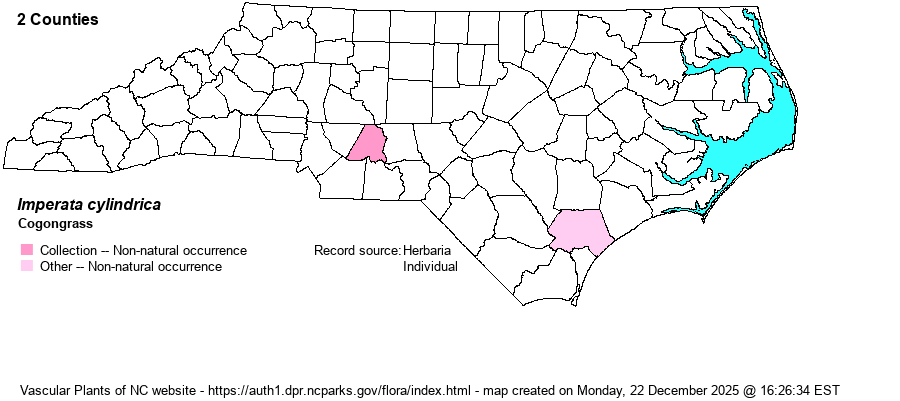| Author | (L.) Palisot de Beauvois | |
| Distribution | The first proven record for NC of this extremely invasive alien was in May 2012 in Pender County (fide Rick Iverson). The second was in July 2013, discovered by NC Forest Service foresters in a thinned Loblolly Pine stand near Albemarle, Stanly County. There was a patch about 200 square feet; eradication was underway soon afterward.
Native to southern Asia and perhaps east Africa. In N.A. established on the Gulf Coastal Plain of GA-FL-AL-MS-LA; disjunct to SC and NC. | |
| Abundance | Very rare, so far as is known. State and Federal forestry personnel and land managers are on the alert for this aggressive alien; any and all populations need to be quickly eradicated, as it can destroy native herb layers in pinelands. | |
| Habitat | On the Gulf Coastal Plain, it forms a turf under open canopies of Longleaf Pine and Slash Pine. It easily tolerates frequent burning; thus it must not be allowed to invade Longleaf Pine communities in NC. | |
| Phenology | Flowering and fruiting May-September. This species is rhizomatous and does not need to form seeds in order to spread. | |
| Identification | The cottony white, narrowly cylindrical inflorescence atop a stem 1-3 feet tall, plus patch-forming habit, should clinch the identification. | |
| Taxonomic Comments | Imperata brasiliensis is extremely similar and separated only by a few technical characters (FNA 2003). For simplicity, we lump it here.
| |
| Other Common Name(s) | | |
| State Rank | SE | |
| Global Rank | GNR | |
| State Status | | |
| US Status | | |
| USACE-agcp | | |
| USACE-emp | | |

